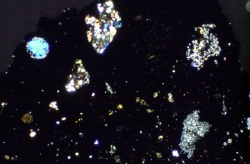
© Michail Panagopolous, et alArchaeologists have discovered more than 50,000 stone inscriptions from ancient Athens and Attica so far. However, attributing the pieces to particular cutters so they can be dated has proven tricky
You might call it "CSI Ancient Greece". A computer technique can tell the difference between ancient inscriptions created by different artisans, a feat that ordinarily consumes years of human scholarship.
"This is the first time anything like this had been done on a computer," says Stephen Tracy, a Greek scholar and epigrapher at the Institute for Advanced Study in Princeton, New Jersey, who challenged a team of computer scientists to attribute 24 ancient Greek inscriptions to their rightful maker. "They knew nothing about inscriptions," he says.
Tracy has spent his career making such attributions, which help scholars attach firmer dates to the tens of thousands of ancient Athenian and Attican stone inscriptions that have been found.
"Most inscriptions we find are very fragmentary," Tracy says. "They are very difficult to date and, as is true of all archaeological artefacts, the better the date you can give to an artefact, the more it can tell you."






Comment: There is no mention here of the possible triggering of earthquakes by this technology.